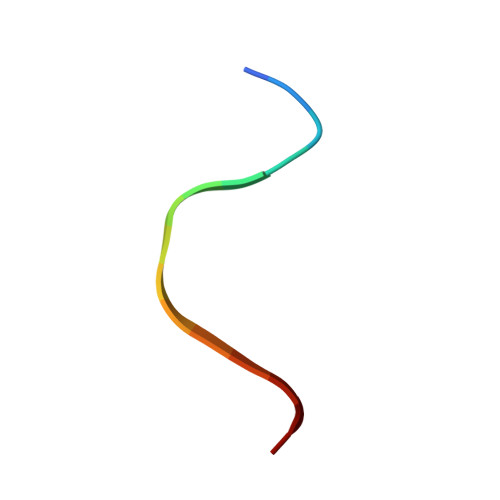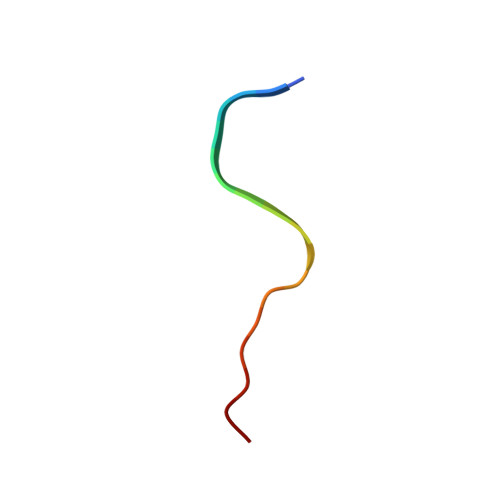The Structure of the Necrosome RIPK1-RIPK3 Core, a Human Hetero-Amyloid Signaling Complex.
Mompean, M., Li, W., Li, J., Laage, S., Siemer, A.B., Bozkurt, G., Wu, H., McDermott, A.E.(2018) Cell 173: 1244-1253.e10
- PubMed: 29681455
- DOI: https://doi.org/10.1016/j.cell.2018.03.032
- Primary Citation of Related Structures:
5V7Z, 5ZCK - PubMed Abstract:
The RIPK1-RIPK3 necrosome is an amyloid signaling complex that initiates TNF-induced necroptosis, serving in human immune defense, cancer, and neurodegenerative diseases. RIPK1 and RIPK3 associate through their RIP homotypic interaction motifs with consensus sequences IQIG (RIPK1) and VQVG (RIPK3). Using solid-state nuclear magnetic resonance, we determined the high-resolution structure of the RIPK1-RIPK3 core. RIPK1 and RIPK3 alternately stack (RIPK1, RIPK3, RIPK1, RIPK3, etc.) to form heterotypic β sheets. Two such β sheets bind together along a compact hydrophobic interface featuring an unusual ladder of alternating Ser (from RIPK1) and Cys (from RIPK3). The crystal structure of a four-residue RIPK3 consensus sequence is consistent with the architecture determined by NMR. The RIPK1-RIPK3 core is the first detailed structure of a hetero-amyloid and provides a potential explanation for the specificity of hetero- over homo-amyloid formation and a structural basis for understanding the mechanisms of signal transduction.
- Department of Chemistry, Columbia University, New York, NY 10027, USA; University of Castile-La Mancha, Instituto Regional de Investigación Científica Aplicada (IRICA), 13071, Ciudad Real, Spain.
Organizational Affiliation:

















